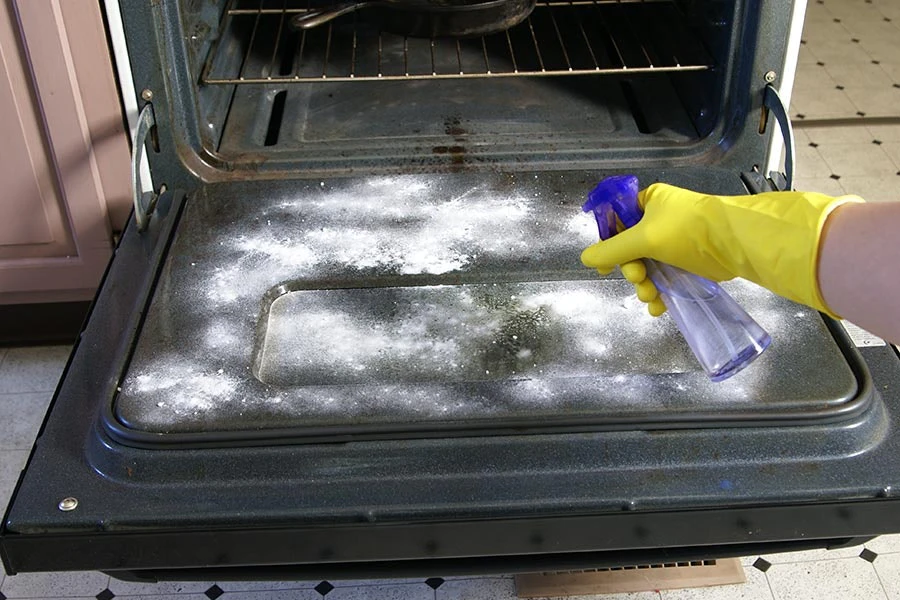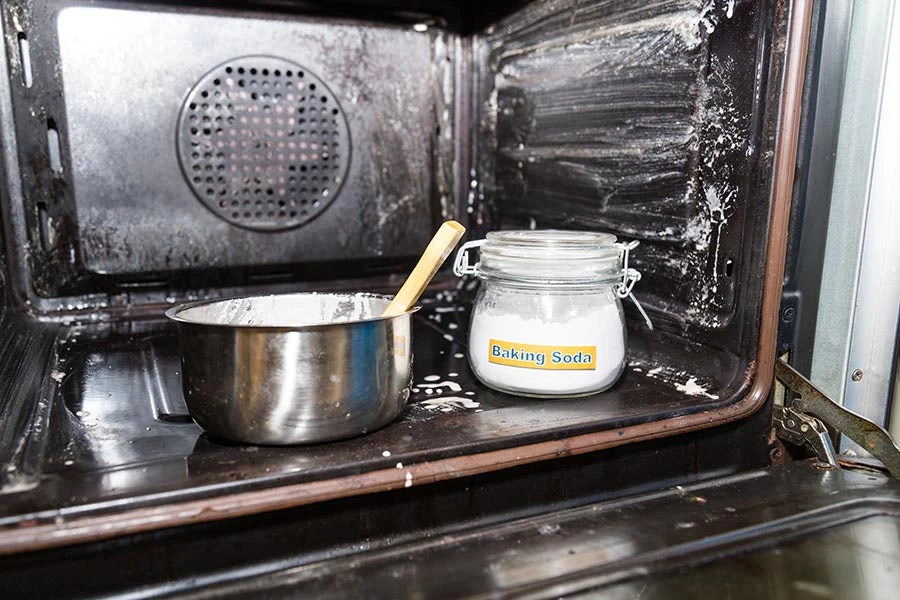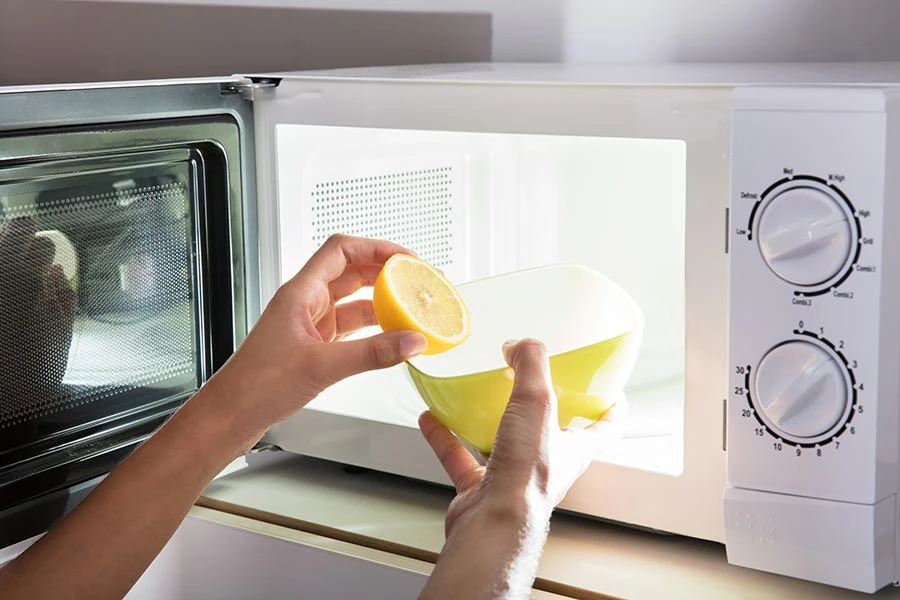
Appliances
Do not let fats accumulate !
In an oven that is not maintained, fats accumulate and eventually over time form a paste that is difficult to overcome. Very sticky, it is not dissolved by water.
.
Self-cleaning oven
If you have a self-cleaning oven, the operation is greatly facilitated. It is a very practical way to avoid chores and to maintain your cooking appliance. With a pyrolysis furnace such as the Thomson TMFP 70 IX , cleaning is carried out at very high temperatures (500 ° C). When the program is engaged, the dirt is thus charred. To avoid accidents, the door of this oven is insulated and remains cold.
When should you clean your oven? It is not necessary to start self-cleaning after each use, once a month will usually be sufficient. In contrast, a wet sponge wipe with a few drops of white vinegar will work wonders. This regular maintenance must be done imperatively when the oven is still warm. So, the fat does not have time to solidify.


Oven without self-cleaning
When the oven is not self- cleaning, it may happen that the sponge is not sufficient, especially if it has not been maintained regularly. In this case too, white vinegar will be of great help. Here's a little secret: in a dish, pour two glasses of white vinegar and two glasses of hot water. Put in the oven for 45 minutes at 120 ° C (thermostat 4). When the oven is still warm, clean with a sponge. It is also ideal for recovering a very dirty door window. On the walls, if the grease resists, to remove it, avoid too abrasive objects and use a wooden spatula instead.
If the oven is badly maintained, you can also use baking soda. In this case, form a paste respecting the proportions of six tablespoons of bicarbonate for two tablespoons of water. Spread and let stand overnight so that the fat absorbs the baking soda. Then clean with a sponge. The other benefit of bicarbonate is its abrasive property.
We do not always think about it, but we must also get rid of the residues that have fallen to the bottom of the oven. These, burning with each new use, generate bad smells. Above all, they are also the source of dangerous fumes that will be deposited on food. To get around it, you can catch them with a sponge or ... the vacuum cleaner!
Microwave oven
A microwave oven is easier to maintain because less subject to splashing fat around. When it needs to be cleaned, you can just put the juice of a lemon in a bowl of water and heat for four minutes at maximum power. Then wipe with a damp sponge.
In the case of a more complete appliance, combining microwave and traditional oven, rather use the previously described methods based on vinegar or bicarbonate.
Less harmful than the use of very aggressive commercial products, these methods require a minimum of effort. If the oven is very dirty, you will still have to scrub! To avoid this, nothing is better than a regular maintenance.


 Denmark (Danish)
Denmark (Danish)  Deutschland (Deutsch)
Deutschland (Deutsch)  España (Español)
España (Español)  France (Français)
France (Français)  Italia (Italiano)
Italia (Italiano)  Nederlands (Dutch)
Nederlands (Dutch)  Polska (Polski)
Polska (Polski)  Russia (Russian)
Russia (Russian)  Sweden (Swedish)
Sweden (Swedish)  Turkey (Turkish)
Turkey (Turkish)  Ukraine (English)
Ukraine (English)  United Kingdom (English)
United Kingdom (English)  USA (English)
USA (English)  China (Chinese)
China (Chinese)  Hong Kong (English)
Hong Kong (English)  India (English)
India (English)  Indonesia (English)
Indonesia (English)  Lebanon (English)
Lebanon (English)  Saudi Arabia (English)
Saudi Arabia (English)  Thailand (English)
Thailand (English)  Vietnam (English)
Vietnam (English)  Algeria (Français)
Algeria (Français)  Egypt (English)
Egypt (English)  Australia (English)
Australia (English)